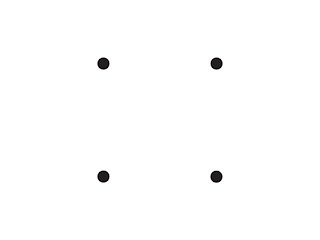So… here you have it: my main set of answers to this
“connect four” challenge:
Here are six solutions to this challenge:
Circle evenly timed, Circle favoring alternate points,
Square evenly timed, Square favoring alternate points,
Star bounce, Star bounce cartoon edit
Many other solutions are also possible, though there
probably aren’t very many more that are appealing. (e.g. In terms of making a complete
study of transitions, anticipate and overshoot would need to be represented.
These would be “somewhat floral”, with a small loop at each knot) For now
(shortly), I’ll be focusing on these six timings at greater depth.
Solution: Stepped
Before getting into the above breakdown situations, let’s take
a look at the blocking for this cycle (in stepped keys).
The keys are distributed evenly in time.
So for 24fps, this puts key poses on 1, 7, 13, 19, 25
(or 0, 6, 12, 18, 24, it makes no difference, but I went
with odds here)
First and last frames are identical, playblast less one
frame for a loop.
A note to clarify what I’m showing: the upper left panel
shows a drawing of the path of action, the upper right panel shows the result,
with ghosting, in 3D, and the lower panel shows the animation curves that produce
these results in the graph editor / animation editor.
As we have just seen, in blocking the four key poses are
always the same, and are also always spaced and timed the same.
So this challenge has only one blocking solution, and this
blocking can lead into ANY of the above timings.
(Lesson: blocking
in stepped keys can be interpreted into many final timing solutions. Blocking is
a simple representation of many timing possibilities.)
But… “Animation: it’s all in the timing and the spacing” (said
Grim Natwick, according to Richard Williams)
To a beginner, the above blocking might simply be converted
directly into splines and that would be that. This is exactly what leads to
that typical “beginner’s look” with animation, also known as drifty, floaty, or
underwater feel.
Next CFBA posting: getting into the splines.





